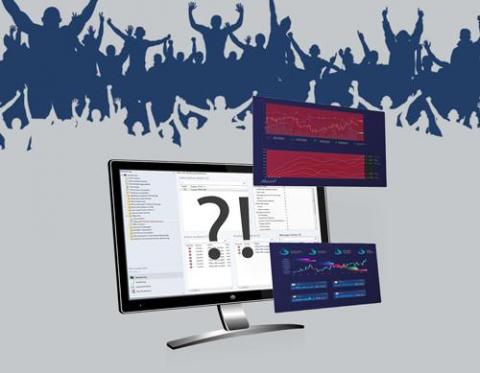Operations | Monitoring | ITSM | DevOps | Cloud
Featured Posts
What's in store in 2023 for the tech industry?
How Is AIOps Transforming the Future of IT Operations?
Did you know that Artificial Intelligence began as an experimental program? However, as the global spending on Artificial Intelligence stood at over $118 billion in 2022 and continues to grow, it's become apparent that this is one experiment that's here to stay and will completely transform the way business operations are undertaken.
Outages ITOps professionals are thankful to avoid
As we settle into the time of year when we reflect on what we're thankful for, we tend to focus on important basics such as health, family and friends. But on a professional level, IT operations (ITOps) practitioners are thankful to avoid disastrous outages that can cause confusion, frustration, lost revenue and damaged reputations. The very last thing ITOps, network operations center (NOC) or site reliability engineering (SRE) teams want while eating their turkey and enjoying time with family is to get paged about an outage. These can be extremely costly - $12,913 per minute, in fact, and up to $1.5 million per hour for larger organizations.
Transcending Observability for a Cloud-Native Future
With digital transformations continuing apace and the popularity of cloud-native and microservice-based applications and architectures growing, Gartner sees investments in such technologies and services increasing, predicting that "cloud-native platforms will serve as the foundation for more than 95% of new digital initiatives by 2025 - up from less than 40% in 2021."
Microsoft SCOM for Office 365 Monitoring? There Is a Better Alternative.
Gartner predicts that spending on public cloud services will rise to 21% in 2023. Most organizations today support fully remote operations and use SaaS services from the cloud. But is your Microsoft Systems Center Operations Manager (SCOM) tool suitable for monitoring mission-critical services like Microsoft 365? Don't get us wrong - SCOM is a comprehensive monitoring tool for servers, infrastructure, and apps such as Exchange and SQL. However, the recently released Microsoft SCOM Management Pack for monitoring Microsoft 365 lacks clout.
Increase customer retention & stop leaving money in the shopping cart
We all know the pain and frustration associated with broken software. It's no secret that the internet is rife with broken links, slow pages, and broken shopping carts, often feeling like it's being held together with glue and duct tape. These issues aren't just causing frustration for customers; it costs businesses millions. According to the Consortium for Information and Software Quality, poor software quality cost US companies $2.08 trillion in 2020. Every interaction between a customer and your technology is an opportunity to build or destroy trust. People tend to have a poor memory when things go right, but oh boy, do they remember when something broke.
Is AIOps Bad for Your Business?
With advances in the field of IT, the amount of data needed to manage IT Operations has grown. In particular with more complex environments, such as the SaaS world, the amounts of data and raw data needed to manage operations have grown exponentially. Managing data manually has become a waste of professionals' skill sets, which could be better used in analyzing and applying the conclusions drawn from the raw data, and not dealing with basic issues that may arise.









